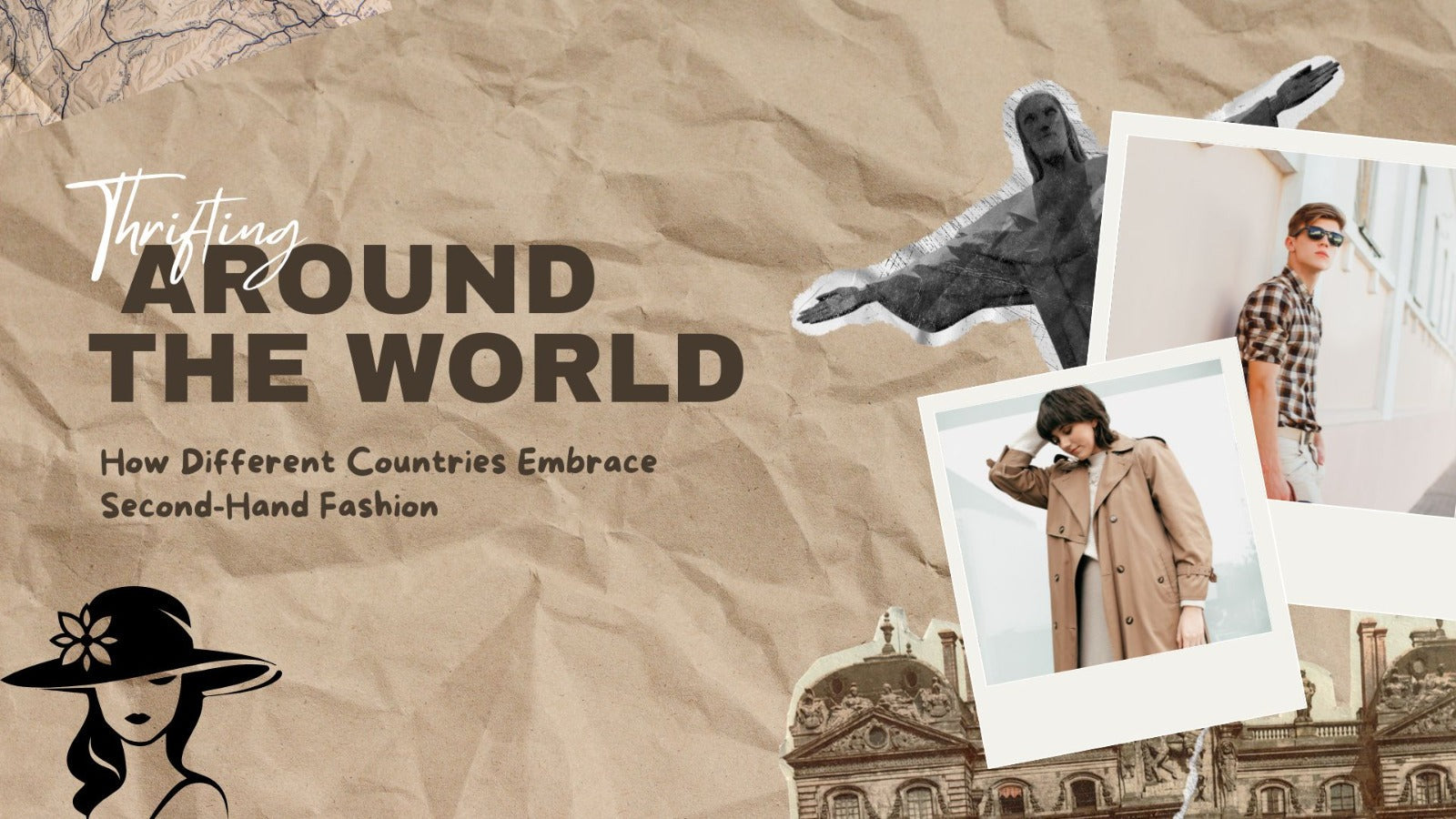Thrifting Around the World: How Different Countries Embrace Second-Hand Fashion

Fashion may be universal, but the way people shop second-hand varies wildly across the globe. From Tokyo’s curated vintage boutiques to New York’s bustling thrift warehouses, the global thrift fashion movement is reshaping the way we dress—and the way we think about style.
Once seen as niche, thrifting has now become a global phenomenon. Driven by sustainability, affordability, and the thrill of finding unique pieces, second-hand fashion around the world is booming. The pre-owned fashion global market is expected to double in the coming years, making circular fashion internationally not just a trend but a lifestyle shift.
So, how do different countries embrace thrift shopping? Let’s take a trip across continents to see how cultures, habits, and traditions shape the international thrift store culture and why vintage clothing trends worldwide are more popular than ever.
USA: The Home of Thrift Store Giants
The U.S. has long been a hotspot for thrifting, thanks to massive chains like Goodwill, Salvation Army, and Buffalo Exchange. Thrifting here is all about variety—you’ll find everything from basic tees to luxury gems hidden on the racks.
-
Thrift shopping trends in the USA: People love the affordability, DIY upcycling potential, and vintage treasure hunts.
-
Cultural vibe: Younger generations see thrifting as cool and sustainable, while many communities have relied on second-hand shopping for decades.
-
Eco-shift: The rise of platforms like ThredUp and Poshmark has made online thrifting a mainstream habit.
Fun fact: America’s resale market is one of the fastest-growing fashion segments, proving that thrifting isn’t just trendy—it’s here to stay.
🇬🇧🇫🇷🇩🇪 Europe: Vintage Meets High Fashion
Europe is where second-hand fashion collides with timeless elegance. From London’s famous Brick Lane vintage shops to Paris’s chic Kilo Shops and Berlin’s eco-driven thrift culture, thrifting is celebrated as both fashionable and sustainable.
-
Thrift shopping trends in Europe: People gravitate toward vintage clothing trends worldwide like 90s sportswear, retro denim, and designer pre-loved luxury.
-
Cultural differences: Europeans often view pre-owned fashion as stylish and curated, rather than “second-hand.”
-
Sustainability angle: With strong eco-conscious movements, Europe leads in eco-friendly shopping habits and global sustainable fashion practices.
Did you know? Paris even hosts “Second Hand September”, a month-long campaign encouraging shoppers to buy no new clothes.
🇯🇵 Japan: Curated & Cultured Thrifting
Japan has perfected the art of second-hand luxury fashion globally. Walk into a thrift store in Tokyo and you’ll find everything from pristine Chanel bags to streetwear grails from brands like BAPE and Comme des Garçons.
-
Thrift shopping trends in Japan: Shoppers love high-quality, well-preserved items, especially second-hand luxury fashion.
-
Cultural approach: Japanese thrift stores are immaculate, organized, and heavily curated—shopping feels like browsing a boutique.
-
Global influence: Japan is a major player in the pre-owned fashion global market, exporting curated vintage and designer items worldwide.
Fun fact: Japan’s second-hand culture is rooted in its respect for longevity and craftsmanship, making thrifting not just stylish but culturally significant.
Other Notable Global Thrift Movements
-
Africa: In countries like Kenya and Ghana, the second-hand clothing trade (“mitumba”) is booming, though it sparks debate about local fashion industries.
-
Australia: Thrift markets and charity shops like Vinnies and Salvos dominate, with a growing interest in eco-friendly shopping habits.
-
South Korea: Vintage streetwear and Y2K fashion are exploding in popularity, with thrift shops in Seoul leading the charge.
-
India: While thrift culture is still emerging, urban cities are embracing sustainable fashion practices in different countries through Instagram thrift shops and curated resale platforms.
The Global Sustainable Fashion Movement
Across continents, thrifting connects people through a shared desire: to consume fashion more responsibly. As cultural differences in second-hand shopping merge with eco-friendly shopping habits, we’re seeing a powerful global sustainable fashion movement take shape.
From popular thrift stores around the world to digital resale platforms bridging countries, how people shop second-hand globally is proof that fashion doesn’t have to be wasteful to be wonderful.
At its heart, thrifting celebrates individuality, affordability, and planet-friendly choices. And no matter where you are—London, Tokyo, Mumbai, or New York—the thrill of finding that perfect pre-loved piece is universal.
Swap Fashions: Bringing Global Thrift Vibes to Mumbai
At Swap Fashions, we bring the spirit of international thrift store culture straight to India. Our curated selection of second-hand luxury fashion, vintage finds, and designer pieces ensures you don’t have to travel the world to experience global thrift fashion trends.
-
Shop authentic pre-loved fashion from top brands
-
Embrace eco-friendly shopping habits with us
-
Discover unique outfits that are stylish, sustainable, and truly global
Final Thoughts: Fashion Without Borders
Thrifting is more than just shopping—it’s a cultural exchange, a sustainability movement, and a global celebration of individuality. From New York’s oversized thrift warehouses to Tokyo’s designer resale boutiques, the way countries embrace thrift fashion reflects their values, traditions, and creativity.
And as the circular fashion movement internationally continues to grow, one thing is clear: second-hand fashion isn’t just a passing trend—it’s the future of style worldwide.
So the next time you step into a thrift store, remember—you’re not just shopping. You’re connecting with a global community of eco-conscious, style-savvy fashion lovers.
